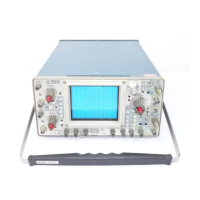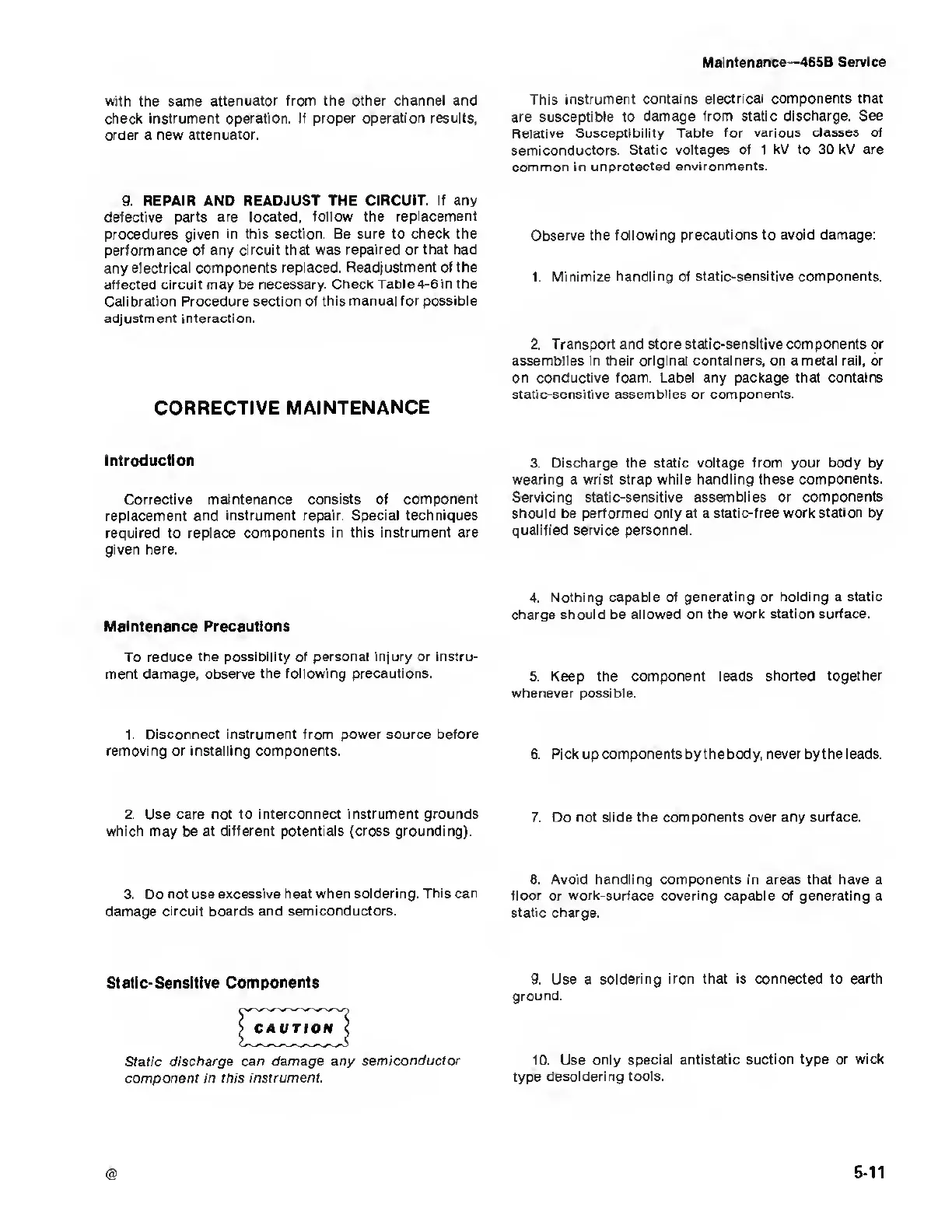Maintenance—465B
Service
with the same attenuator from the other
channel and
check
instrument operation. If proper operation results,
order a new attenuator.
9. REPAIR
AND READJUST THE CIRCUIT.
If any
defective parts are located,
follow the replacement
procedures given in this section. Be
sure to check the
performance of any circuit
that was repaired or
that had
any
electrical components replaced. Readjustment
of the
affected
circuit may be necessary. Check
Table
4-6
in the
Calibration Procedure section of this manual for
possible
adjustment interaction.
CORRECTIVE
MAINTENANCE
Introduction
Corrective maintenance consists of
component
replacement and instrument repair.
Special techniques
required to replace components in this
instrument are
given here.
Maintenance
Precautions
To reduce the possibility of
personal injury
or
instru-
ment damage, observe
the following precautions.
1.
Disconnect
instrument
from
power source before
removing
or
installing components.
2.
Use care not to
interconnect instrument grounds
which may be at different
potentials
(cross
grounding).
3.
Do not use
excessive heat when soldering. This can
damage circuit boards and
semiconductors.
Static-Sensitive Components
Static discharge can
damage any semiconductor
component in this
instrument.
This
instrument contains
electrical
components
that
are susceptible to
damage from static discharge. See
Relative
Susceptibility Table for various
classes of
semiconductors.
Static voltages of 1 kV to 30 kV are
common in unprotected
environments.
Observe
the following precautions to avoid damage:
1.
Minimize
handling
of static-sensitive components.
2.
Transport and store static-sensitive components or
assemblies In their original containers, on a metal rail, or
on conductive foam.
Label
any package
that contains
static-sensitive assemblies or components.
3.
Discharge the static voltage from your body by
wearing
a wrist
strap while handling these components.
Servicing static-sensitive assemblies or
components
should be
performed only
at a
static-free work station by
qualified service
personnel.
4.
Nothing capable of
generating
or holding a
static
charge
should be allowed on the work
station surface.
5.
Keep the component leads shorted together
whenever possible.
6.
Pickupcomponentsbythebody, never by the leads.
7.
Do not slide the
components over any surface.
8.
Avoid handling components
in areas that have a
floor or work-surface covering capable of generating a
static charge.
9.
Use a soldering iron that is
connected
to
earth
ground.
10. Use only
special antistatic suction type or
wick
type
desoldering tools.
5-11

